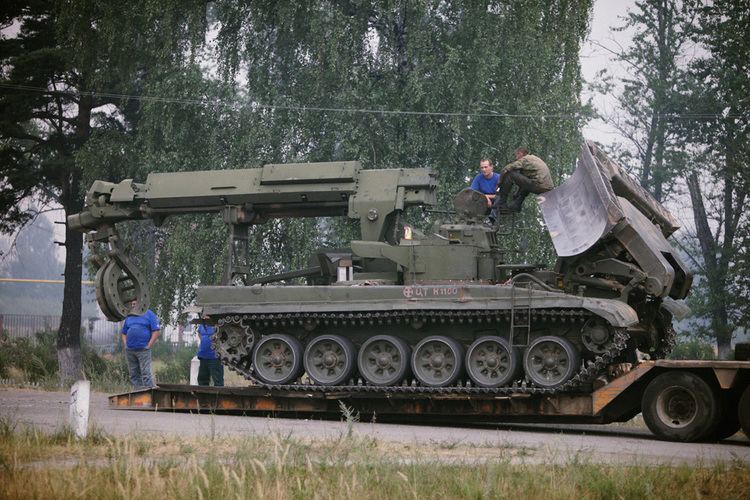Place of origin Russia Length 9.55 m | Weight 44.3 tonnes Width 4.35 m | |
 | ||
Type Heavy combat engineering vehicle Wars Soviet–Afghan WarFirst Chechen WarSecond Chechen WarSyrian Civil War | ||
IMR-2 - combat engineering vehicle built on T-72 main battle tank.
Contents
Development of the IMR-2 begun in 1970s completed in 1980, while commercial production commenced 1982. IMR-2 developed to replace aging IMR which built on base of T-54/55 tank.The IMR-2 combat engineering vehicle is in service with Russian Army and some foreign militaries. It took part in Soviet–Afghan War, First Chechen War, Second Chechen War and in addition used in relief operations after Chernobyl disaster.
Design
IMR-2 built on T-72. The turret of T-72 has been removed and new rotating multipurpose telescopic crane has been added. The IMR-2 is equipped at the front of the hull with bulldozer has V shape and straight shape, a 200 – 250 m³/h capacity . When not required, the blade is folded upwards. Stone barriers can be cleared at the rate of 280 to 350 meter an hour while trenches and tree barriers can be filled in at the rate of 350 to 400 m/h. A 12.7 mm NSVT machine gun is mounted on the crew operator/commander cabin, for the self-protection of the vehicle.
Propulsion
The IMR-2 is powered by a multi-fuel water-cooled diesel engine V-84Ms developing 840 hp.The same engine used in T-72. The IMR-2 can run at a maximum road speed of 50 km/h with a maximum range of 500 km. The IMR-2 uses the same torsion-bar suspension as the main battle tank T-72, which consists of six road wheels for each side. This combat engineering vehicle is operated by a 2-man crew.
